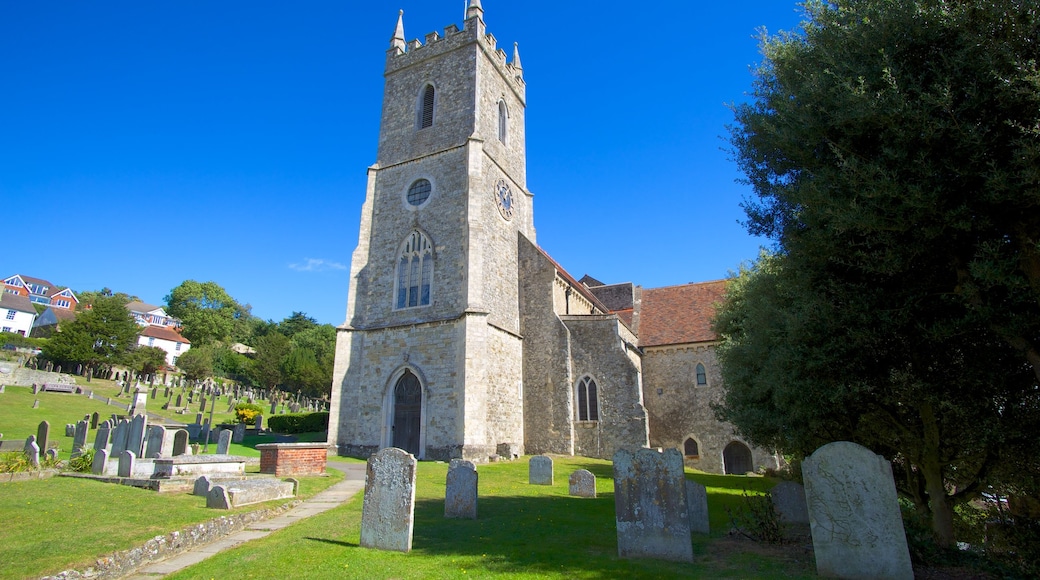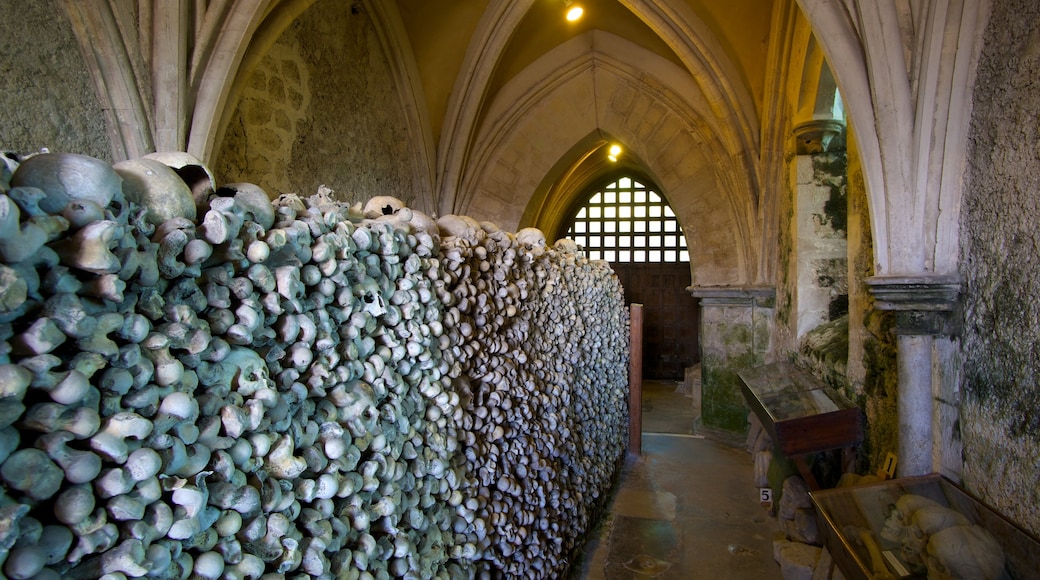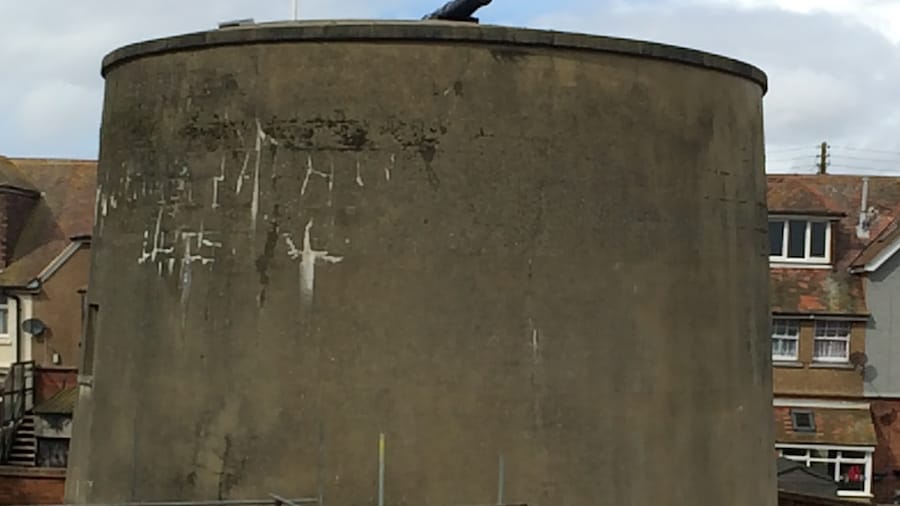Discover Hythe’s picturesque 11th-century church and its magnificent stained-glass windows, tree-lined gardens and mysterious underground crypt.
The picturesque old St. Leonard’s Church crests the hill that rises up out of Hythe from the Royal Military Canal. Built in the 11th century, St. Leonard’s Church features Canterbury Cathedral-style architecture, beautiful stained-glass windows, ornate carvings and a mosaic-decorated pulpit. The church went through many changes over a thousand years, from Saxon chapel to Norman quayside church to understated Reformation church. After surviving an earthquake so severe it made the bells ring out across town, the church was enlarged into a lavish cathedral complete with an underground crypt-like ossuary.
St. Leonard’s ossuary is a mysterious feature of the church. The skeletal remains of approximately 2,000 people lie here, collected sometime in the 12th century when the church was enlarged to its present size. See 1,200 skulls neatly arranged and grinning ghoulishly in rows and long bones stacked up in piles lining the walls.
For a very small entrance fee, a guide will allow you into the ossuary and give you an informative tour of the underground chambers. The origin and purpose of the collected bones are still unclear. Some believe they are the bones of foreign soldiers or victims of the Black Death others think they were from graves disturbed by the enlargement of the church and then kept as a town attraction for pilgrims travelling on to Canterbury.
After a morbid underground tour, emerge into daylight and wander around the church grounds. The charming gardens are a peaceful and leafy space for quiet reflection. St. Leonard’s is located on Oak Walk at the top of the small hill north of the town centre. The church is open to visitors every day, but be sure you respect those using it as a place of worship when you visit. Explore the ossuary any day from the beginning of May to the end of September.













